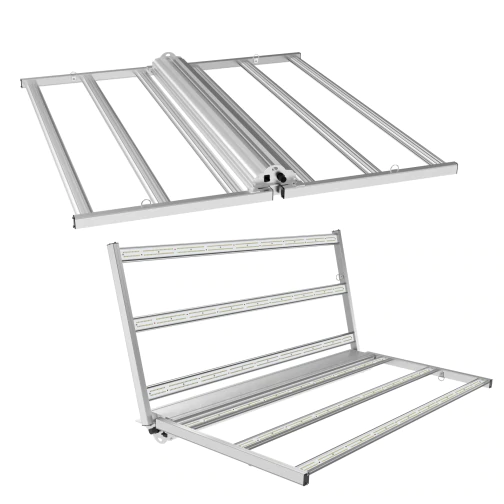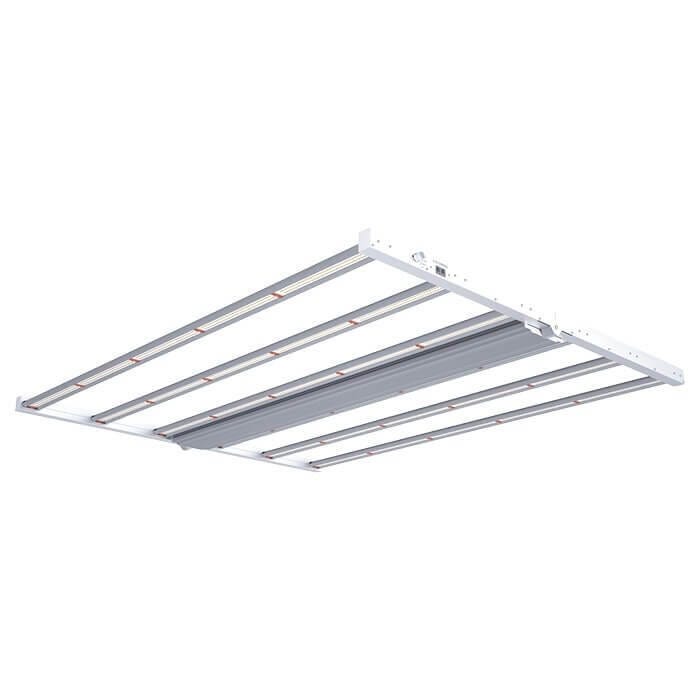- Home
- SHOP ECO FARM
-
TOP BRANDS
-
Grow Lights Brands
- Adjust-A-Wing
- Apollo Horticulture
- Bestva
- Black Dog LED
- California Lightworks
- ChilLED Grow Light
- Eco Farm
- HLG - Horticulture Lighting Group
- Kingled
- Kind LED
- Mars Hydro
- Morsen
- Neilo
- NextLight
- Phlizon
- PlatinumLed
- Roleadro
- Optic LED Grow Lights
- ViparSpectra
- Vivosun
- EYE Hortilux
- IPOWER
- NanoLux
- Phantom grow light
- Gavita grow lights
- Grower's Choice
- Lumatek
- Maxibright
- Yearld Pro
- ThinkGrow
- Crecer Lighting
- Green Sunshine Electric Sky
- fohse aries
- loriflux
- luxx
- fluence
- iluminar
- Lex
- LTC
- Rayonled
- FGI
- PHOTONTEK
- Grow Tents & Kits Brands
- Extraction & Harvest Brands
- Climate Control & Hydroponic Brands
-
Grow Lights Brands
- COMPANY INFO
- COOPERATE WITH US
- Blog
- Sign in
- Home
-
SHOP ECO FARM
- ECO Farm Grow Lights
- ECO Farm LED Grow Lights
- ECO Farm Quantum Board
- ECO Farm Samsung LED Grow Lights
- ECO Farm COB Grow Lights
- ECO Farm Commercial Lights
- ECO Farm Supplemental Grow Light
- ECO Farm Fluorescent grow lights
- ECO Farm HPS & MH Grow Lights
- ECO Farm CMH Grow Lights
- ECO Farm HID/CMH Bulbs & Ballasts
- ECO Farm Grow Tents & Kits
- ECO Farm 2x2ft Grow Kits
- ECO Farm 3x3ft Grow Kits
- ECO Farm 3.3x3.3ft Grow Kits
- ECO Farm 4x4ft Grow Kits
- ECO Farm 5x5ft Grow Kits
- ECO Farm Grow Tent - Standard Style
- ECO Farm Grow Tent - Extension & Roof & Lodge Style
- ECO Farm Extraction & Harvest
- ECO Farm Rosin Press Machine
- ECO Farm Dry & Wet Trimmers
- ECO Farm Oil Accessories
- ECO Farm Medicinal Plants Grinder
- ECO Farm Medicinal Plants Containers
- ECO Farm Medicinal Plants Dryer
- ECO Farm Refrigeration Dryer
- ECO Farm Climate Control & Other Accessories
- ECO Farm Inline Duct Fans
- ECO Farm Oscillating Fans
- ECO Farm Exhaust Fans
- ECO Farm Air Filter
- ECO Farm Duct Muffler
- ECO Farm Ventilation Kits
- ECO Farm Plant Humidifiers
- ECO Farm Plant Dehumidifiers
- ECO Farm Hydroponic Accessories
- ECO Farm Other Accessories
- ECO Farm Hydroponics Microscopes
-
TOP BRANDS
- Grow Lights Brands
- Adjust-A-Wing
- Apollo Horticulture
- Bestva
- Black Dog LED
- California Lightworks
- ChilLED Grow Light
- Eco Farm
- HLG - Horticulture Lighting Group
- Kingled
- Kind LED
- Mars Hydro
- Morsen
- Neilo
- NextLight
- Phlizon
- PlatinumLed
- Roleadro
- Optic LED Grow Lights
- ViparSpectra
- Vivosun
- EYE Hortilux
- IPOWER
- NanoLux
- Phantom grow light
- Gavita grow lights
- Grower's Choice
- Lumatek
- Maxibright
- Yearld Pro
- ThinkGrow
- Crecer Lighting
- Green Sunshine Electric Sky
- fohse aries
- loriflux
- luxx
- fluence
- iluminar
- Lex
- LTC
- Rayonled
- FGI
- PHOTONTEK
- Grow Tents & Kits Brands
- Apollo Horticulture
- Black Box
- CoolGrows
- Eco Farm
- GrowLab
- Gorilla Grow Tents
- Mars Hydro
- Quictent
- Secret Jardin
- Unit Farm
- TopoGrow
- VIVOSUN
- Topolite
-
COMPANY INFO
-
COOPERATE WITH US
- Blog
ECO Farm MB660 Foldable Grow Light Bar VS Street Light 680w LED Grow Light
June 15, 2022
If you’ve landed on this article, chances are you’ve had this thought at least once over the past while, and for good reason.
There’s a lot that goes into buying quality lighting for your grow setup. Factors like budget, electricity usage, the needs of your plants, and your spacing requirements all come to mind. Never mind the light itself.
There’s an overwhelming amount of information out there and very little time in the day to navigate it all.
Fortunately enough, you have us to rely on — we’re more than happy to get our hands dirty and do the work for you!
In this article, we’ll provide you with insight into the most important aspects of a LED grow light.
Enjoy!
Essential Things you Need to Know about LED Grow Lights
The purpose of an LED grow light is to help plants grow. The LED grow light is designed to mimic the natural lighting provided by the sun. They add more red and blue light sources and infrared (IR) to accelerate cell division. Also, ultraviolet (UV) prevents excessive development.
Plants can photosynthesize better and develop quicker with this artificial light source, and they can even escape pests. They make it easier to grow inside or when there isn’t enough sunshine.
On the other hand, all the countries don’t need LEDs to grow lights. These are useful in temperate-zone countries, particularly in regions far north or far south where sunshine is scarce for half the year. Plants that generally do not develop or hibernate due to a lack of light can benefit from “Grow Lights,” which supply light in the required wavelength.
ECO Farm MB660 Foldable Grow Light Bar

Features:
ECO Farm LED Grow Light adopts Samsung LM301B LED chip and Osram 660nm chip, 6 passively cooled LED strips, professional SMD design provides uniform and wide canopy coverage, higher light intensity, less light decay. It easily achieves a 30% higher average PPFD with an incredibly high efficiency of 2.7 µmol/J. A total of 2160 LEDs consume only 660W on a 4x4 ft growing area, resulting in a smaller footprint and better crop quality and quantity. The foldable grow light is equipped with 2112 LM301b 3030 white chips + 48 Osram 660nm red chips, which can meet all plant stages from sowing to flowering, accelerate growth and increase crop yield. The dimming knob design can adjust the light intensity in the range of 0–10V according to the growth needs. It is the perfect sunlight grow light for full cycle hydroponics, soil, grow tent/room growing. LED grow lights feature full-spectrum light, similar to sunlight, providing efficient lighting from sowing to harvesting. It is ideal for hobbyists and commercial growers.
Street Light 680w LED Grow Light

Features:
Designed to deliver an astonishing 2.7µmol/J and 1750µmol/s PPF, Street Light LED grow light uses premium Osram and Samsung LED chips to deliver powerful full-spectrum light across six LED strips. Designed for use from the vegetative plant stage to the harvest stage, the Street Light SL-680 offers growers great convenience with an easy-to-use plug-and-play setup that eliminates the need to switch lighting or move plants mid-growing. With a single LED covering the full spectrum 3000K 5000K 660nm 760nm IR, our grow lights are perfect for all growth stages. In addition, it works and supports all growth stages such as bloom and tall growth. This grow light has a dimming knob that powers the unit via an ON/OFF switch and dims it from 0–100. This customization makes LED strip lights ideal for different plant stages and growing environments.
Features to Consider When Buying a Grow Light for Your Greenhouse
Grow lights must be chosen according to your region’s climate as well. In areas that receive harsh and gloomy weather, grow lights prove to be the primary light source for plants.
Not sure about the features that you must consider when buying a grow light for your private conservatory? This section will help!
1. Consider the Plants You’ll Be Growing
To ensure that grow lights offer maximum benefits to your plants, it’s important to choose the right product for the right crop. For example, LED grow lights can offer features that affect plant growth rate as well as their life, reacting differently in changing environmental conditions.
2. Measure the Surface Area
Now it’s common sense that installing one grow light in a large-scale greenhouse won’t be sufficient. Therefore, before buying grow lights, measure the surface area of your greenhouse. This will help you determine the number of light units and the distance among them.
3. Check the PAR Value of LED Grow Lights
Short for Photosynthetically Active Radiation, PAR is a measurement tool to calculate a certain type of light radiation that’s very beneficial to plants. It’s safe to say that PAR acts as an alternative to the sunlight when it comes to natural photosynthesis process.
But it’s important to note that a higher PAR value of an LED grow light doesn’t mean that it’s better. The thing you should focus on is evenly distributing PAR to help every plant achieve optimal growth rate.
4. Check the Cooling Quality
Grow lights can create a warm environment inside your greenhouse. Therefore, you must check whether or not your desired grow light has a proper self-cooling feature. If you’re choosing grow lights without cooling tech, consider installing vents and heat sinks to avoid overheating the plants.
5. Don’t Overstep Your Budget Limit
The next thing you should be careful about is your hard-earned cash. There are many grow light sellers in the market, and not all of them are reliable. While they may be offering authentic products, they can charge excess installation, shipment, and service fees.
Conclusion
Indoor gardens can be a rewarding and fun hobby. It’s easy to be successful when you have the right tools at hand. LED lights specifically designed for indoor plants make this an enjoyable process. There are many systems to choose from as well as various price points, so there is something for everyone.
Have you tried indoor gardening yet? Please share your tips and experiences in the comments.
Also in Indoor Grow LED Grow Light
HLG Greenhouse Pro HE HV 630W LED Grow Light VS Geeklight grow light 480W hydroponic led grow light
October 20, 2023
